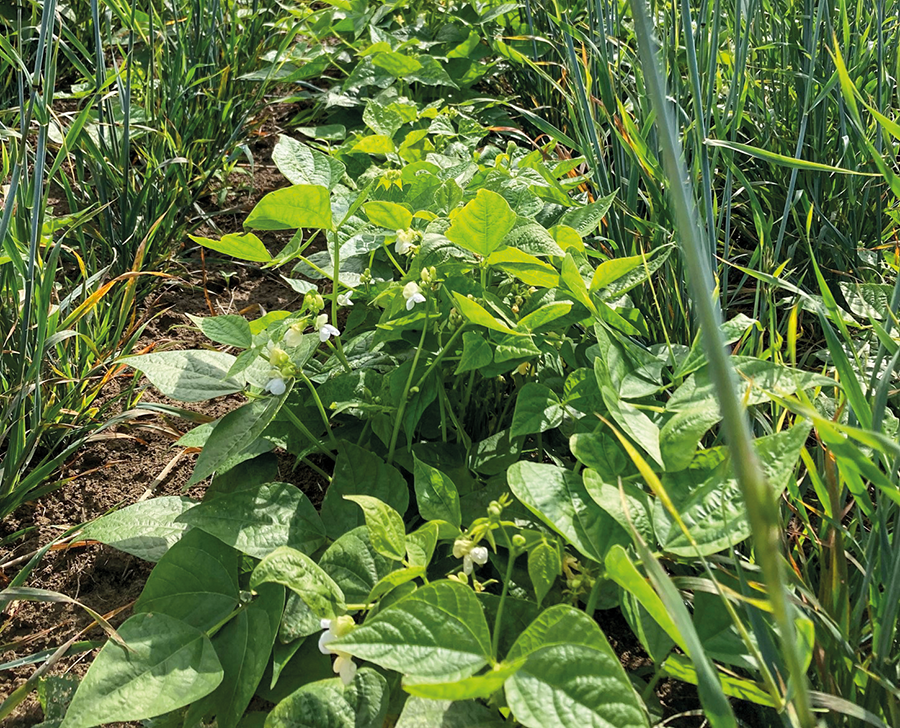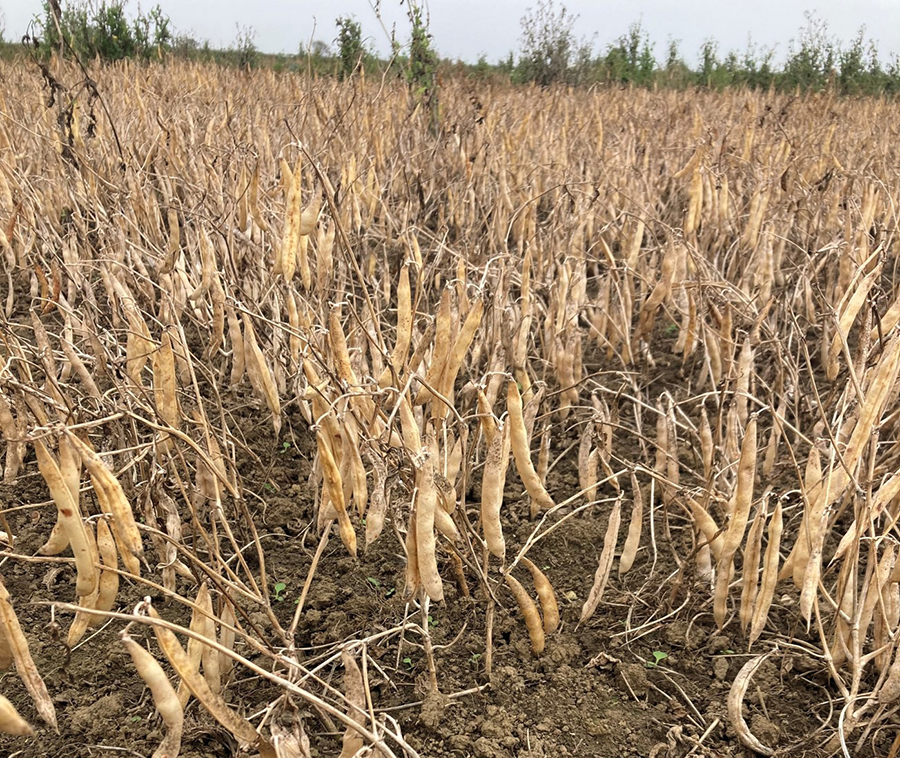Can British-grown ‘baked beans’ fill the break crop gap?
8th February 2024
A Lincolnshire grower has successfully grown a crop of Capulet beans, which have been processed as UK-grown baked beans. Farmers Guide investigates what it takes to produce the crop and whether they have a future on British farms.

There has been much discussion in the industry about growing more protein crops in the UK. However, despite the talk, the provisional AHDB early bird survey predicts a 10% decline in pulse area from the previous year. Pulse yields can be variable, and a reduced chemical armoury has increased the challenges in growing them, dissuading some farmers.
Pulse experts at Agrii partnered with the University of Warwick and Andrew Ward of Roy Ward Farms to begin the process of learning how to grow haricot/Capulet beans. “We have always believed in not standing still and trying new things,” says Mr Ward. “Our country relies too heavily on imports, and the government does not seem concerned about it.
“Food security is a huge issue. There are 300 tonnes of baked beans consumed in the UK daily, and none is produced by British farmers. We should not just accept that these come from abroad; that is why we started working […] on this project.”
Market opportunity
With processors paying up to £985/t for imported haricot beans to make into baked beans and the UK consuming two million tins per day, the market opportunity for farmers is clear. The challenge is to learn to grow a crop traditionally produced in the prairies of America and Canada with little reference to how it grows best in our maritime climate.
They tested three haricot bean varieties bred for the UK climate by Eric Holub at The University of Warwick – Capulet, Godiva and Olivia. Capulet is a small white bean, traditionally the preferred type for baked beans. Godiva has a blonde colour, and Olivia is black. Both are larger than Capulet and tend to be used in the cooking market, predominately for curries.
The crop trials have investigated companion cropping and seed rates to help develop the best crop management strategy. They hoped to discover the optimum plant population for yield and ground cover to help with weed control and plant architecture.
Another important goal is to increase the small seed stocks of the varieties. Pulses are notoriously tricky to multiply quickly because of the required seed rates, yields and propensity to lose germination. They are dealing with the only seed supplies of these varieties worldwide, so it is incumbent on them to produce enough to scale production in the future.

“The crop was drilled in May and harvested at the end of September. They were ready to harvest 10 days earlier, but the weather had closed in by then, and we had to wait for them to dry,” explains Mr Ward.
“The three things we want to try this year are increasing the seed rate, planting them deeper and drilling earlier. This is to increase the plant population because this year’s crop was not very thick, making weed control challenging.”
Mr Ward has been told that bruchid beetle can be an issue on earlier drilled crops, which would be problematic because they are for human consumption. Late frosts are also a concern if it was drilled earlier. However, these risks are outweighed by an expected improvement in plant establishment.
Increased competition aids height
“Haricot beans grow very close to the ground, so we used a combine with a MacDon header to harvest them, which did a great job. They were not so low to the ground where they were planted with a companion crop. The increased competition encouraged them to grow vertically, and the companion crop helped support them,” adds Andrew.
“All crop protection options are available through EAMUs,” says Rebecca White, specialist break crop product manager at Agrii. “The herbicides are the same as those used for French dwarf beans, with Basagran (bentazone) as the primary pre-emergence herbicide.
“Haricot beans can be susceptible to downy mildew, although we did not see any in Andrew’s crop despite lacking a fungicide.
“They prefer a similar seed bed as you would prepare for combining or vining peas. We planted 80–90 seeds/m2 as the standard seed rate.”
The plot with the companion crop yielded 1.9t/ha, and the one without yielded 1.6t/ha. Mr Ward and Ms White believe it can be improved this year with what they learned last season.
Although last year’s yield is modest compared to average field bean yields, the market premiums and low growing costs still produce a competitive gross margin for haricot beans, especially when their nitrogen-fixing ability, spring sowing and entry into winter wheat are factored into their rotation value.
“We successfully trialled canning a sample of the Capulet beans at Princes, although most of last year’s crop was reserved for seed. I plan to grow 45 acres this year using the lessons learned from last season,” concludes Mr Ward.
“Agrii is working with the food chain to develop the market opportunities for UK-grown haricot beans,” adds Ms White. “We will need to scale up seed production. On top of Andrew’s expanded area, we are looking for other farmers to work with on the crop.”
Read more arable articles here


